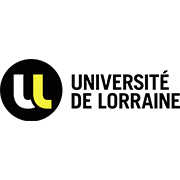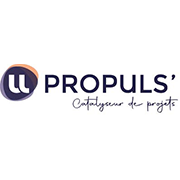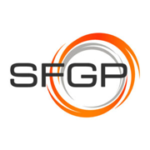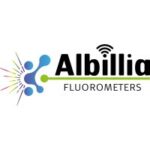LATEST NEWS FROM THE CONFERENCE

LATEST NEWS FROM THE CONFERENCE
To help you prepare your presentation, please follow the instructions below.
We cordially invite you to attend TRACER 9, the 9th International Conference on Tracers and Tracing Methods in Benicàssim, Spain on 14–16 May 2024.
Since 1998, the primary objective of the « Tracer » conferences has remained to present the current status and trends on tracing methods and their applications. It progressively evolved to also present studies in flow modelling and simluation (numerical tracing, CFD, compartmental and systemic modelling). It is the opportunity for attendees from different fields to exchange scientific information and knowledge about tracer methodology and applications.
We cordially invite you to submit your proposals for communications to be part of this major international conference.
History of TRACER conference
• TRACEUR in Nancy, France, 1998
• TRACER 2 in Nancy, France, 2001
• TRACER 3 in Ciechocinek, Poland, 2004
• TRACER 4 in Autrans, France, 2006
• TRACER 5 in Tiradentes, Brazil, 2008
• TRACER 6 in Oslo, Norway, 2011
• TRACER 7 in Marrakech, Morocco, 2014
• TRACER 8 in Đà Nẵng, Vietnam, 2019
• TRACER 9 in Benicàssim, Spain, 2024
Find out where the 3-day conference will be held
A look back at TRACER 8, Vietnam, 2019 in pictures
TRACER 9 focuses on hydrodynamics studies using tracing methods: development and fundamental researches in interpretation of tracings, residence time distribution (RTD), numerical tracing, modeling and simulation such as Computational Fluid Dynamics and Compartmental modeling. The conference is also open to presentations about new technical features concerning tracers, methods, devices, and applications. It is not limited to a scientific field, but to every kind of applications of tracing in industry, science, medicine, etc., from very large scale to microscopic scale. TRACER 9 is also open to innovation and breakthrough applications of tracing in new industrial and scientific fields.
New tracers, techniques and equipment
• New tracers (including radiotracers, non-radioactive tracers, isotopic ratios, nanoparticles)
• New techniques and equipment (online, offline, scanning, camera, particle tracking, nucleonic control systems)
• Advanced data treatment and modelling
• Imaging and visualization techniques (e.g. tomography)
Modelling and simulation
• Systemic modelling
• Compartmental modelling
• Computational fluid dynamics (CFD)
• Numerical residence time distribution (Virtual tracing) and tracer experiments
• Advanced data treatment
Chemical engineering and related topics
• Chemical industries (Tracers in evaluation of unit process operations, Leak detection)
• Biotechnology and biological engineering,
• Pharmaceutical industry
• Food industry and agro-food processes
Mining and metallurgy
• Mining
• Mineral and metallurgy processes
• Ore fields and metal unit process operations, including environment related evaluations
Energy
• Oil and gas processcing and petrochemical
• Electrical plants
• CO2 emission reduction
• Renewable energy applications (geothermal, shale gas, biomass…)
Oil field evaluations and production
• Tracers for Interwell, Single Well, Downhole studies
Industrial applications
• Industrial column/pipeline/storage tanks and vessels investigations (tomography, gamma and neutron scanning)
• Activation techniques for wear, erosion and corrosion measurements
• Lube efficiency evaluations (Application of Thin Layer Activation and related techniques)
Environmental applications
• Waste and wastewater treatment, disposal and environmental contamination (effluent treatment, air pollution control, landfills, wastewater treatment and recovery facilities, constructed and natural wetlands, soil and groundwater remediation)
• Tracers in water resources research, hydrology, hydrogeology, ecohydrology, leakage through dam, agriculture, ecology, wetlands, geology
• Greenhouse gas tracing, emission reduction
• Sediment transport mechanisms (soil erosion, reservoir sedimentation, siltation and dredging in navigation channels, harbors)
Medical, safety and risk prevention applications
• Process safety
• Prevention of occupational risks
• Ventilation systems characterization using tracers
• Monitoring respiratory protection devices using tracers
• Substituting sulfur hexafluoride (SF6): a challenge
• Tracing for medical examinations and imaging
• Diffusion in tissues
Other tracing applications
• Agriculture
• Drinking water production
• Innovative and breakthrough applications
Radiotracers: regulatory, standardization, accreditation, certification and safety aspects
• Role of regulatory bodies, General criteria for selection of methods and proceedings for safe operations to be established in coordination with the regulatory bodies.
• Accreditation and certification
• Standardization: Quality standards for Licensing (methodologies, laboratories, equipment and personnel), Calibration and maintenance of the instrumentation and equipment.
• General resources required for radiotracers applications (Personnel, Infrastructure, Instrumentation and suggested materials, Use of radioisotope generators)
• General recommendations for on field uses of radiotracers: Handling and safe operation, Radiation protection, Radiotracers transport, Prevent of contamination, Waste disposal, Emergency instructions, How to proceed in case of contamination (general rules and decontamination agents)
The committee of the international TRACER Series of Conferences composed of the two co-chairs: Julien Laurent and Olivier Potier, who succeeded to Jean-Pierre Leclerc in 2017, and a representative of tracer users in the professional sector Patrick Brisset. Jean-Pierre Leclerc was the initiator of the TRACERS Series of conferences at the Université de Lorraine (formally Institut National Polytechnic de Lorraine) in 1998.
Sergio Chiva is the President of the Organizing Committee.




Société Française de Génie des Procédés
(French Chemical Engineering Society)


TRACER 9 is organized with the support of the Working Group on Computational Fluid Dynamics, an official Working Group from the IWA (International Water Association) Modelling & Integrated Assessment (MIA) Specialist Group
http://iwa-mia.org/task-groups-working-groups/